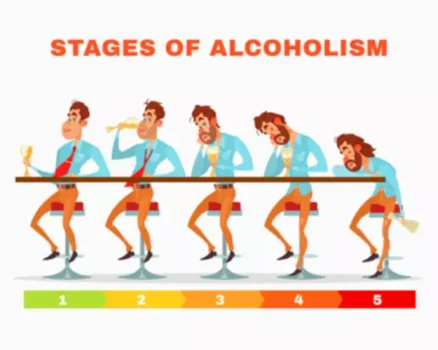
Alcohol has been shown to interact both directly and indirectly with additional synaptic and intracellular signalling targets within the brain, and this topic has been reviewed elsewhere [172]. In this section, we will present a brief summary of the main effects of alcohol on some of the synaptic and molecular targets within the brain and how these can affect synaptic activity. Given this background and so as to effectively treat AUD, it is imperative that we understand the neurobiological mechanisms behind the development of addiction. In this review, we discuss the current literature on the neurobiology of AUD, with a focus on the biological changes that occur in the brain resulting in addiction. We also highlight the current non-pharmacological and pharmacological therapies available for the treatment of AUD and conclude by listing potential future directions in this rapidly evolving field of research. From a clinical standpoint, this is important because it underscores the value of these models in identifying and evaluating new treatment strategies that may be more effective in battling the problem of relapse.
Genetic factors
Furthermore, a recent study used a variant of the Daun02 method, in which LacZ expression in a transgenic mouse line is driven by the promoter of the inflammatory mediator nuclear factor (NF)-κB. In the course of classical reward learning, acquisition of conditioned place preference for alcohol, cells activated in the nucleus accumbens by a rewarding dose of alcohol were deleted. This prevented acquisition of the reward memory, as showed by failure to develop place preference121. https://ecosoberhouse.com/article/why-do-alcoholics-crave-sugar-in-recovery/ Detailed spatial maps of temporally coherent neural activity can be obtained by histological methods. For this purpose, expression of the immediate-early gene cFos induced in strongly activated neurons can easily be detected105 and linked to behavioral output59,104. Early studies using antisense oligonucleotide approaches demonstrated functional consequences of blocking cFos expression on behavioral, neurochemical, or electrophysiological responses106,107,108.
Brain outcomes
Enhanced voluntary alcohol drinking in dependent mice produced brain alcohol concentrations similar to those achieved during the chronic alcohol exposure that initially rendered the animals dependent. Samples were collected from the nucleus accumbens of alcohol-dependent mice that had undergone three cycles of chronic intermittent alcohol vapor exposure (red symbols) and nondependent controls (black symbols). Samples were taken before, during, and after the 2-hour drinking session, when the mice had the opportunity to voluntarily physiological dependence on alcohol drink alcohol (15 percent vol/vol) or water. Alcohol intake during the drinking session was 3.04 ± 0.15 g/kg for dependent mice and 2.32 ± 0.28 g/kg for nondependent mice. Horizontal lines and shaded area represent brain alcohol levels (means ± SEM) measured in the dependent mice during chronic intermittent alcohol exposure (28.4 ± 3.5 mM). Alcohol is excreted in urine, sweat and breath, but the main method of elimination from the body is by metabolism in the liver where it is converted to acetaldehyde and acetate.
How Can I Tell If I’m Dependent On Alcohol?

Faria et al. [142] also looked at Egr-1 (transcription factor, indirect marker of neuronal activity and involved in neuroplasticity), showing a stronger reduction in Egr-1 expression in the PFC, NAc, and hippocampus of adolescent versus adults after repeated ethanol exposure. Regarding ∆FosB, Wille-Bille et al. [111] found increased ∆FosB in adolescent compared to adult rats in the prelimbic PFC, dorsomedial striatum, NAc core and shell, central amygdala nucleus capsular, and basolateral amygdala after 3 days per week 18 h ethanol exposure sessions for 6 weeks. In sum, the three available studies provide preliminary evidence for increased adolescent vulnerability to ethanol-induced long-term genetic (mRNA expression) and epigenetic (methylation) changes in mesocorticolimbic areas.
- Human studies have found that alcohol ingestion can lower estrogen levels in adolescent girls (Block et al. 1993) and lower both LH and testosterone levels in midpubertal boys (Diamond et al. 1986; Frias et al. 2000a).
- Disruptive behaviour disorders are the most common comorbid psychiatric disorders among young people with substance-use disorders.
- Older people are at least as likely as younger people to benefit from alcohol treatment (Curtis et al., 1989).
- Sleep change was determined by subtracting year 10 average hours’ sleep from year 7 average hours.
- Whether consumed as wine, beer, or spirits, the alcohol content remains the same; a glass of wine, 250ml of ordinary strength beer and a single measure of spirits are all equal in their impact on health [9].
- People who drank seven to 14 alcoholic drinks a week lowered their life expectancy by about six months, people who drank 14 to 24 drinks a week lowered their life expectancy by one to two years, and consuming more than 24 drinks a week lowered life expectancy by four to five years.
In studies of male and female rats, chronic alcohol consumption (an alcohol diet) for the length of adolescence was found to stunt limb growth. One study found that feeding female rats alcohol in a way that mimics binge drinking resulted in either increases in bone length and density or in no change with more frequent bingeing. In human adolescent males but not females, studies have found that alcohol consumption decreases bone density. Glutamate is the major excitatory neurotransmitter in the brain; it exerts its effects via several receptor subtypes, including one called the N-methyl-d-aspartate (NMDA) receptor.

- Partners of people with harmful alcohol use and dependence experience higher rates of domestic violence than where alcohol misuse is not a feature.
- This latter finding suggests that elevated alcohol self-administration does not merely result from long-term alcohol exposure per se, but rather that repeated withdrawal experiences underlie enhanced motivation for alcohol seeking/consumption.
- If you find that you ‘need’ to share a bottle of wine with your partner most nights of the week, or always go for a few pints after work just to unwind, you’re likely to be drinking at a level that could affect your long-term health.
- The 5th Edition of the Diagnostic and Statistical Manual of Mental Disorders (DSM-V), which was published in 2013, has integrated the previously used terms of alcohol abuse and alcohol dependence into a single condition referred to as alcohol use disorder (AUD).
Why outdoor adventure is important for women as they age
- For instance, a recent study in rats indicated that a history of alcohol dependence alters the functional connectivity of the anterior insula124.
- In these cell experiments, it was shown that amino acid response element and cyclic-AMP response element-binding protein act as important transcription factors for the expression of HERP.
- Age-related strengthening of this fronto-limbic connection correlated with better performance on a delay discounting task in boys, suggesting that adolescent alcohol use may interfere with typical development of higher-level cognitive functions.
- It should also be noted that a deep understanding of a drug’s mechanism of action is in no way a condition sine qua non to therapeutic efficacy.
- When addiction is related to drugs or alcohol, the condition is also called a substance use disorder.
